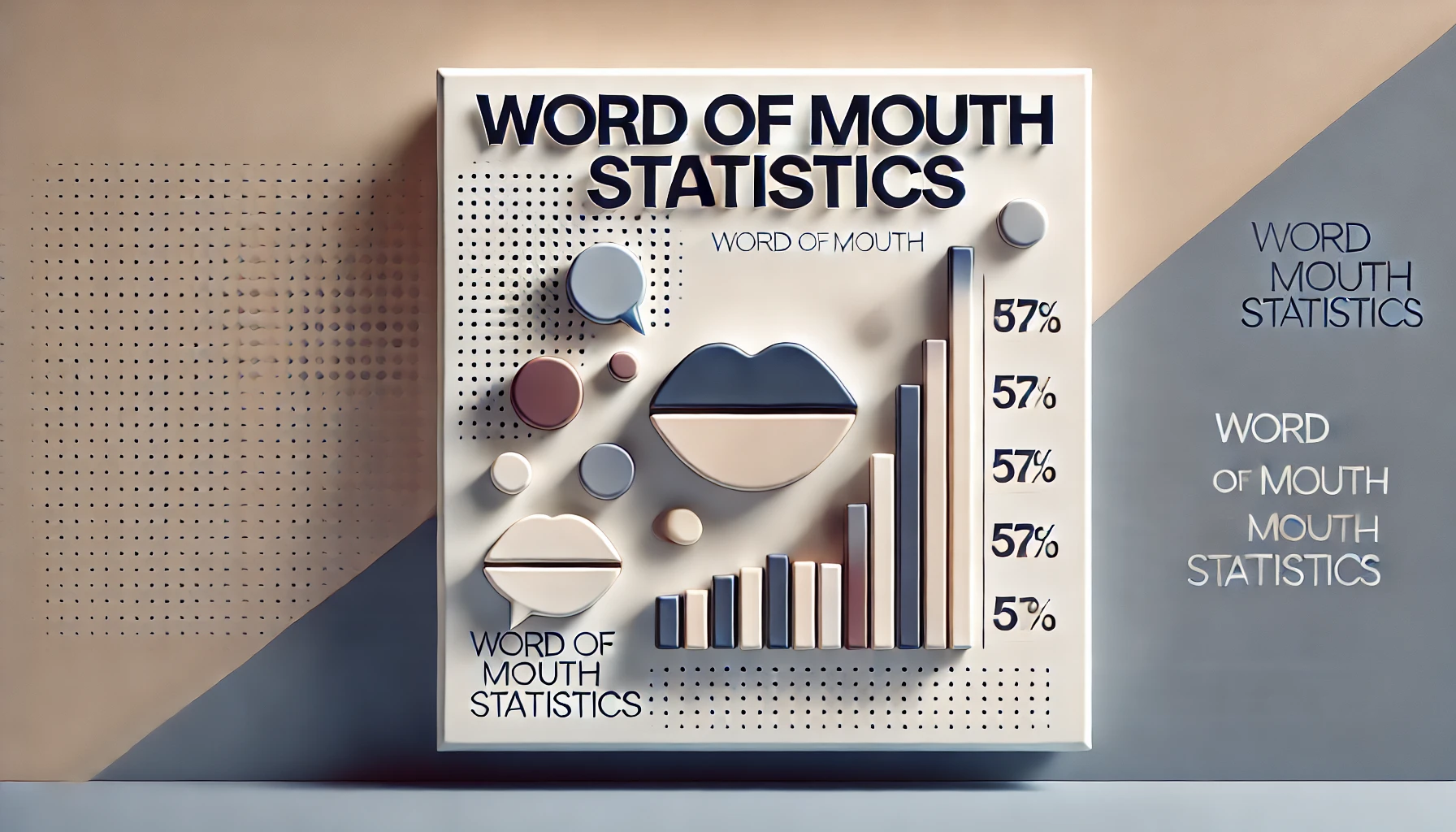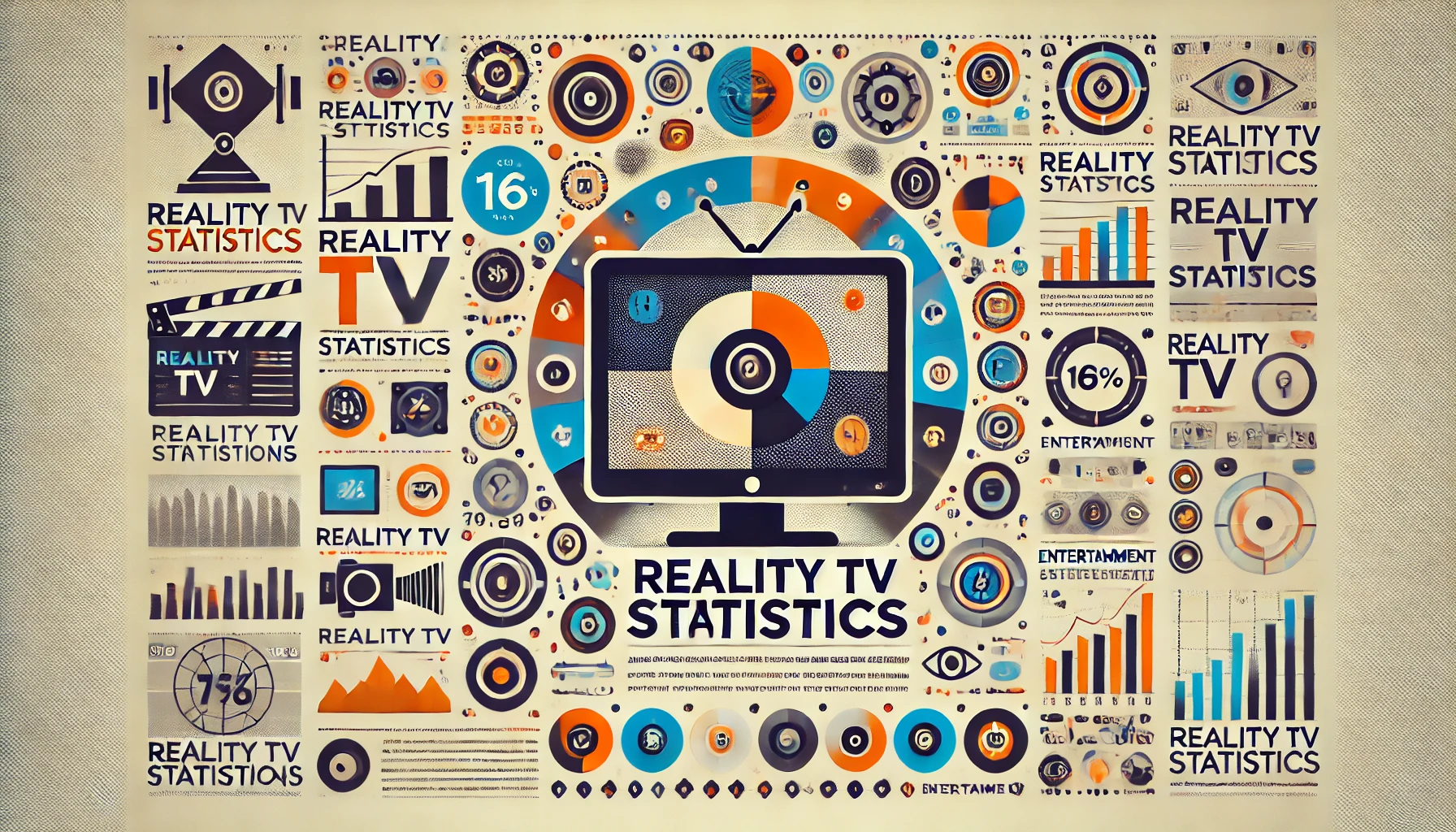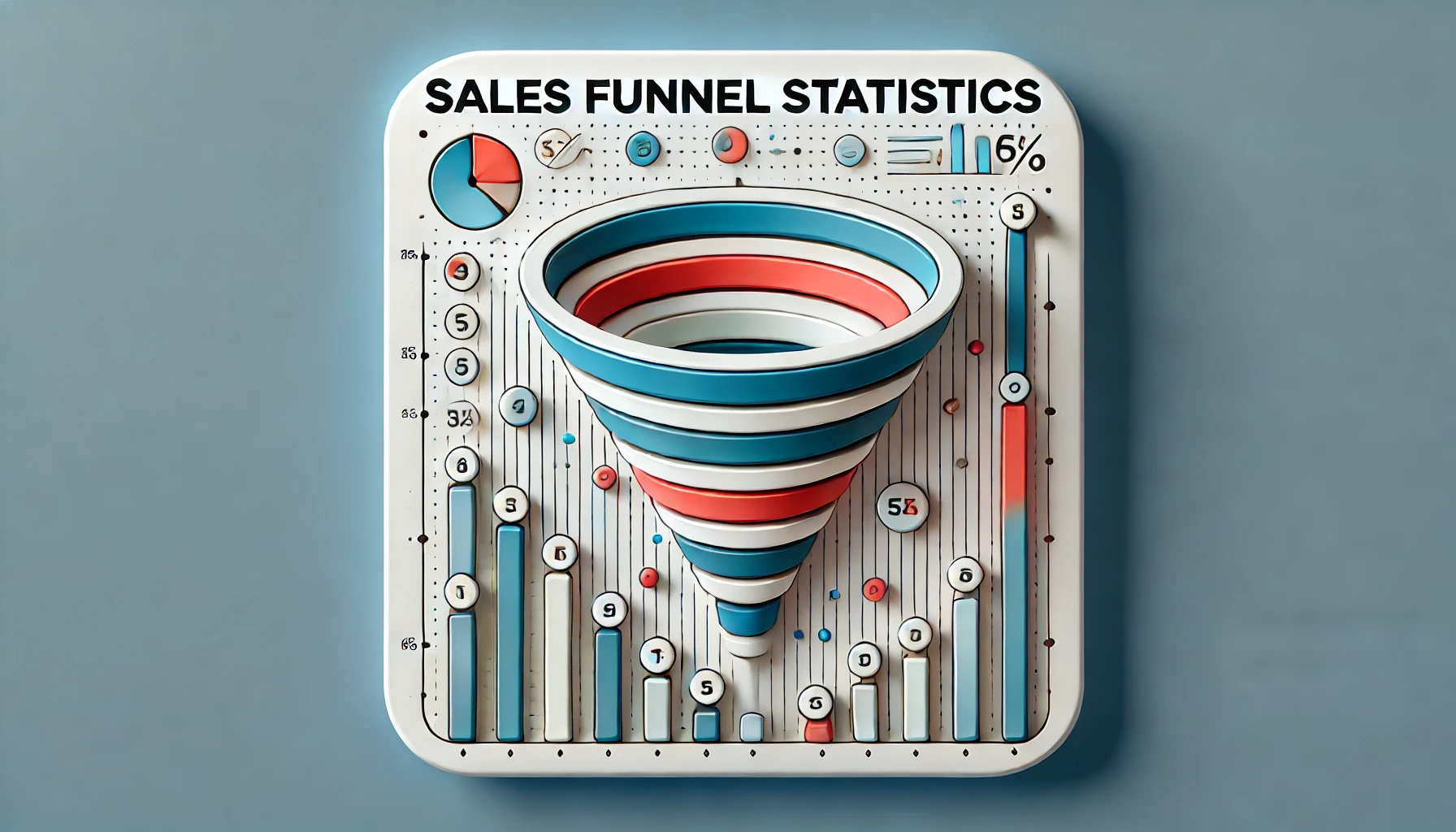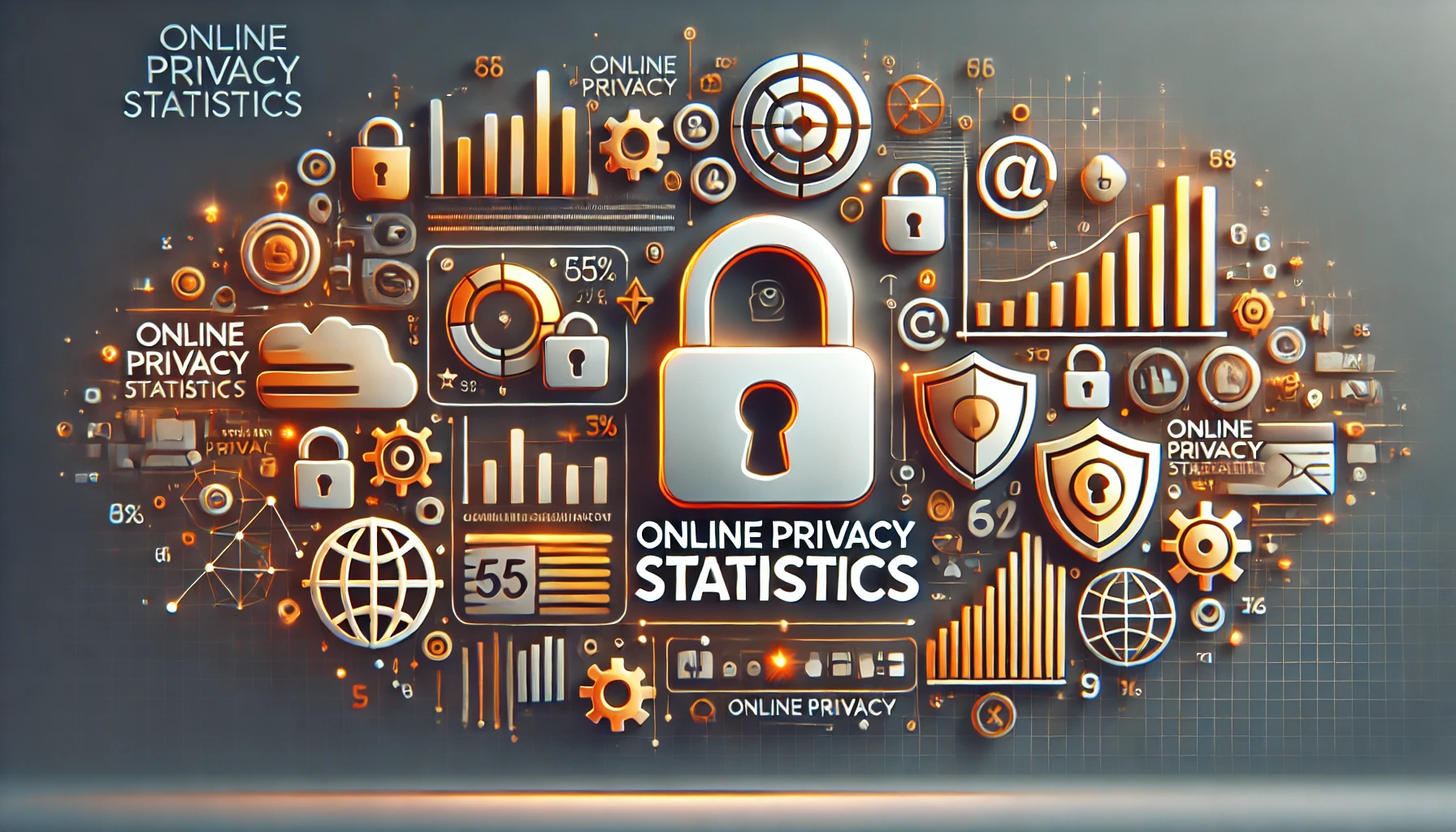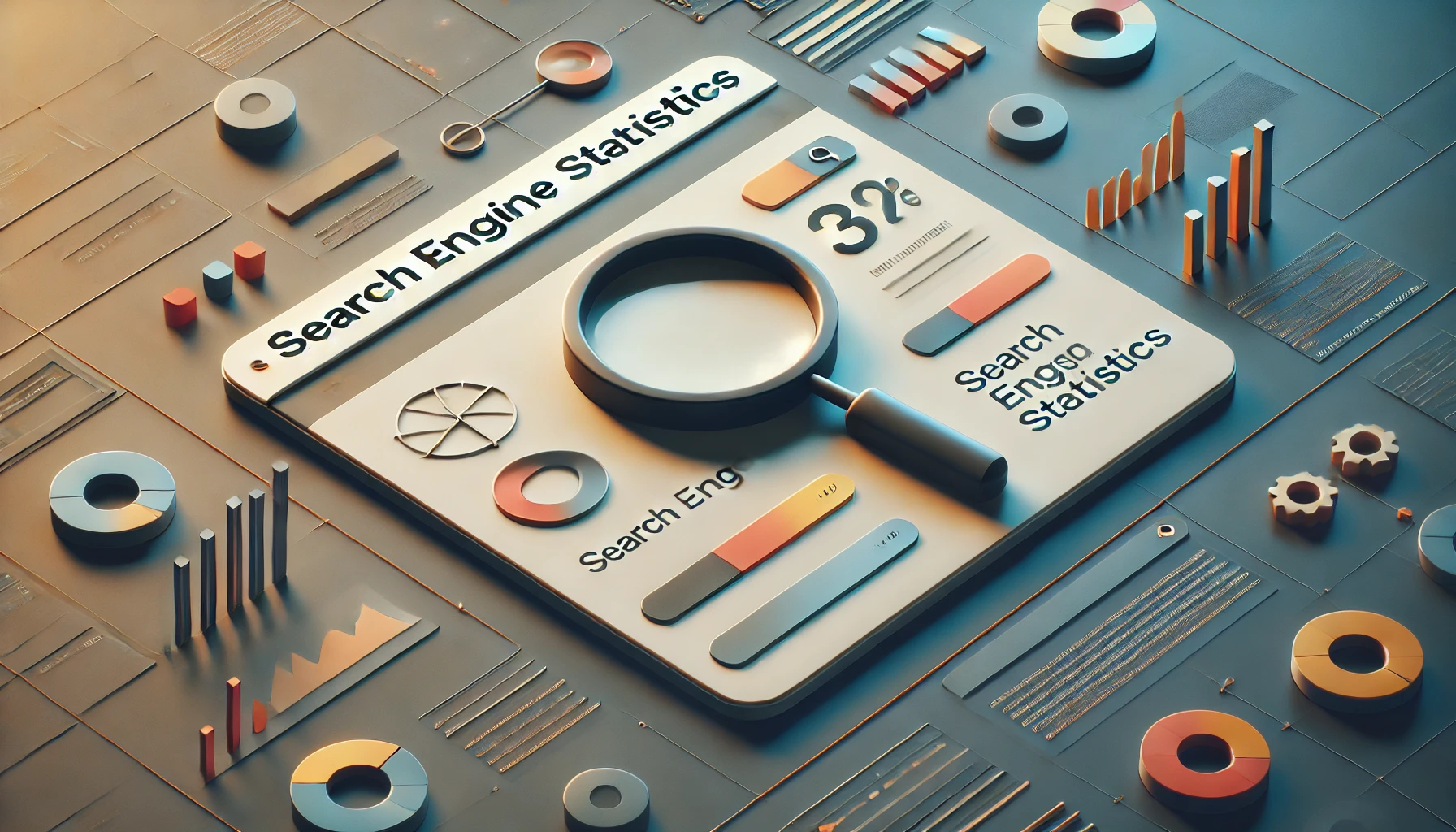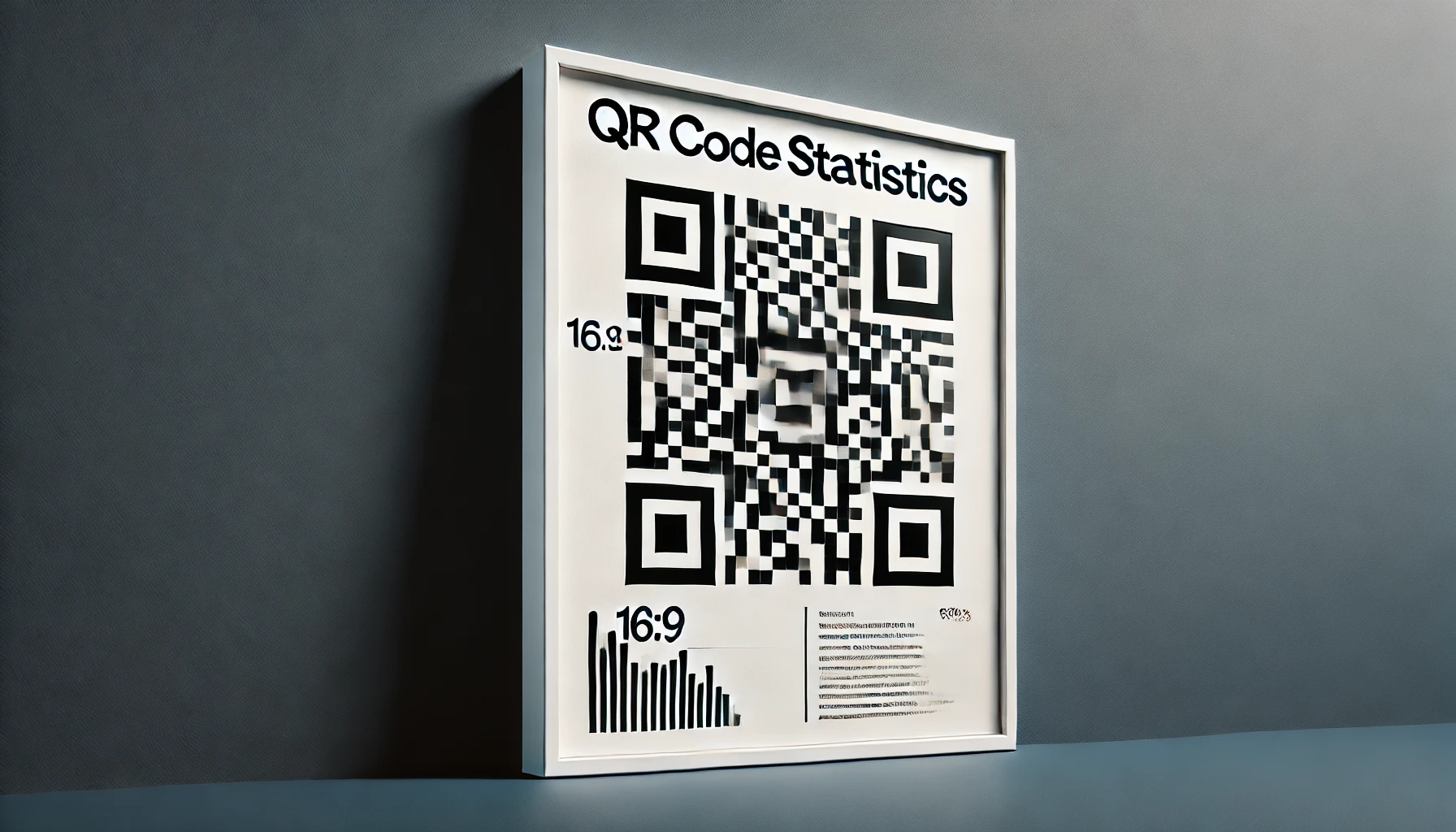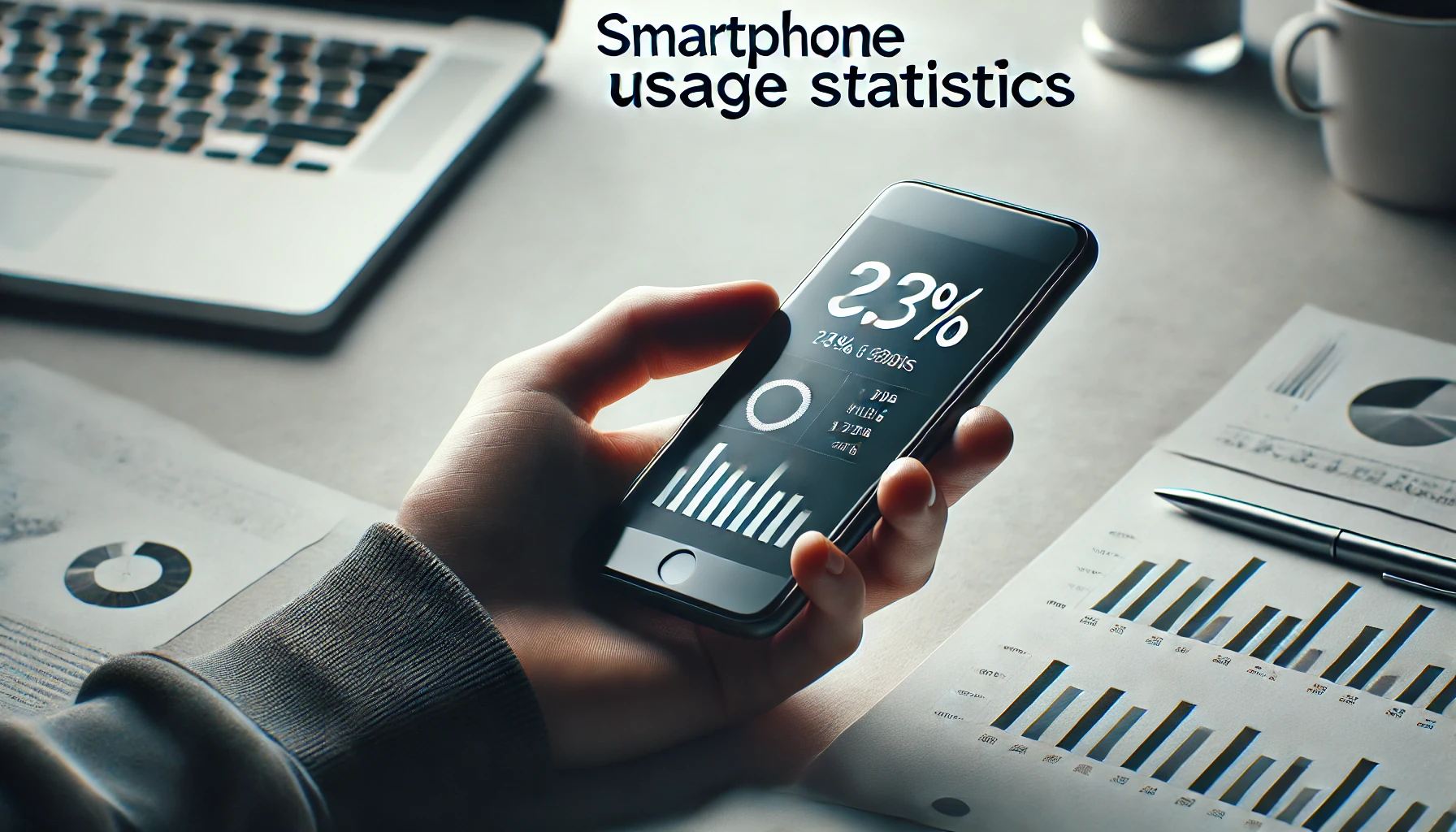Remote Patient Monitoring Statistics By Growth, Outcomes, Region, Market Segmentation And AI
Updated · Sep 12, 2024
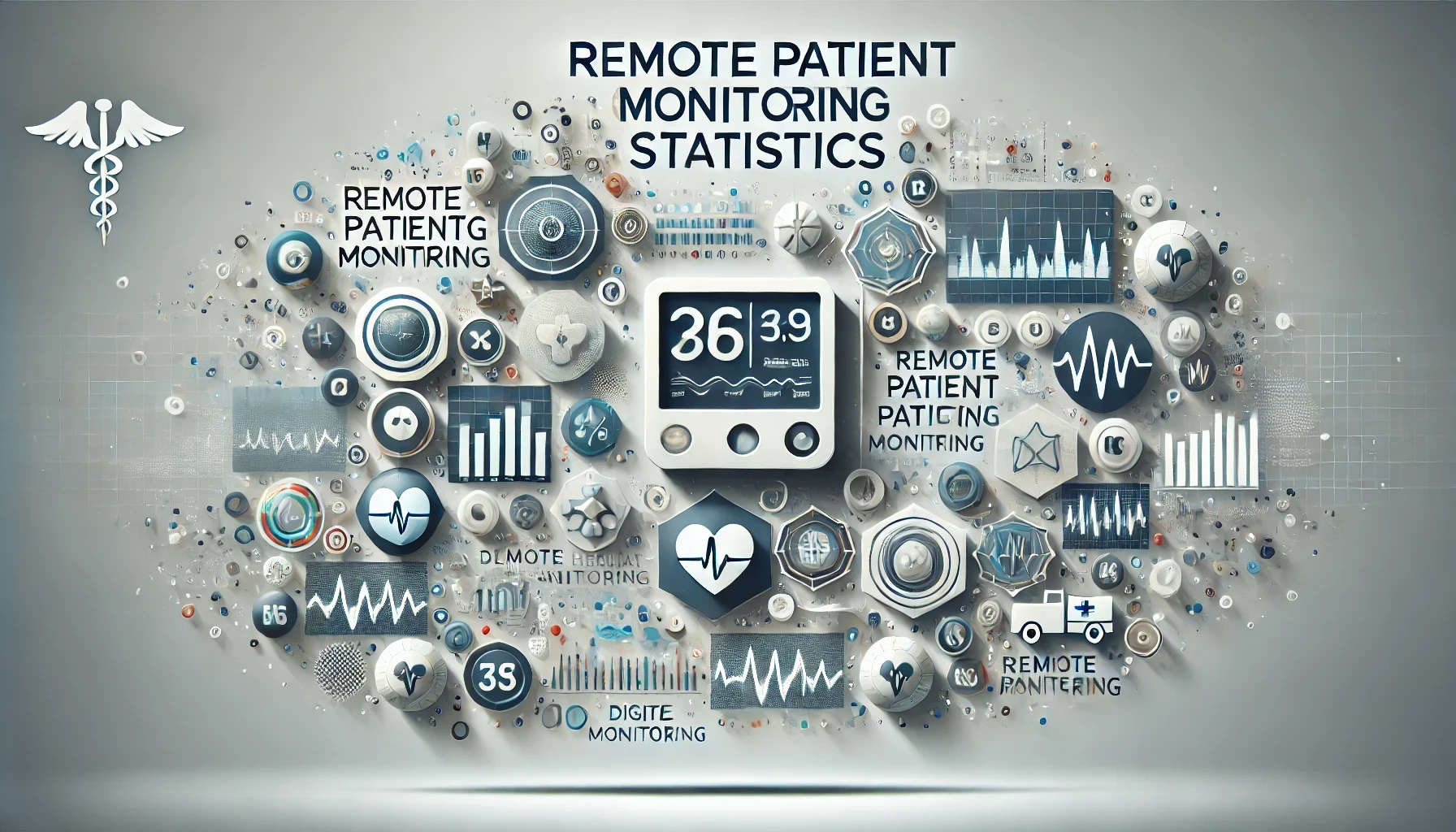
WHAT WE HAVE ON THIS PAGE
- Introduction
- Editor’s Choice
- What is Remote Patient Monitoring?
- Is Remote Patient Monitoring The Same As Telehealth?
- General Remote Patient Monitoring Statistics
- Remote Patient Monitoring And Cost-Saving Statistics
- Remote Patient Monitoring Market Growth Statistics
- Outcomes Statistics Of Remote Patient Monitoring Statistics
- Remote Patient Monitoring Regional Statistics
- Remote Patient Monitoring Recent Development Statistics
- Reduction In Hospital Admission Statistics
- Remote Patient Monitoring Devices Market Segmentation
- Artificial Intelligence In Remote Patient Monitoring Statistics
- Devices Used For Remote Patient Monitoring Devices
- Conclusion
Introduction
Remote Patient Monitoring Statistics: Telehealth, which means getting healthcare through electronic communication, has changed a lot since it began. As technology has improved and healthcare experts have come up with new uses for it, Telehealth has grown quickly. The use of electronic health records (EHRs) and better internet access have allowed healthcare to extend beyond doctors’ offices and into patients’ homes.
Remote patient monitoring (RPM) is a Telehealth service that healthcare providers use to check on patients using digital devices outside of regular care settings. These devices include weight scales, blood pressure monitors, pulse oximeters, and blood glucose meters. The data from these devices is sent electronically to healthcare providers to help manage care. Automated systems can provide feedback and alert providers if any readings are abnormal or concerning. We shall shed more light on “Remote Patient Monitoring Statistics” through this article.
Editor’s Choice
- 84% of healthcare providers think Remote Patient Monitoring improves patient outcomes.
- The global Remote Patient Monitoring market is expected to reach $175.2 billion by 2027.
- Remote Patient Monitoring can cut hospital readmissions by up to 38%.
- 77% of patients are open to using Remote Patient Monitoring to manage chronic diseases.
- Remote Patient Monitoring can save healthcare systems up to $6,500 per patient each year.
- 69% of healthcare organizations are currently using or plan to use Remote Patient Monitoring.
- Remote Patient Monitoring can reduce emergency room visits by up to 78%.
- The COVID-19 pandemic sped up RPM adoption by 3 to 5 years.
- 88% of healthcare providers have invested in or plan to invest in Remote Patient Monitoring.
- Remote Patient Monitoring can boost medication adherence by up to 50%.
- The Remote Patient Monitoring device market is projected to grow at a rate of 14.9% annually from 2021 to 2028.
- 71% of patients say RPM gives them more peace of mind.
- Remote Patient Monitoring can lower the cost of managing chronic diseases by up to 50%.
- 93% of healthcare providers believe Remote Patient Monitoring is crucial for enhancing patient care.
- Remote Patient Monitoring can shorten hospital stays by up to 25%, as per Remote Patient Monitoring Statistics.
What is Remote Patient Monitoring?
Remote patient monitoring (RPM), also called telemonitoring or in-home monitoring, uses technology to track a patient’s health data in real time from afar and include it in their treatment plan. It’s an important part of the larger telehealth and e-health fields.
RPM is particularly helpful for people with long-term health issues, those recovering from surgery, seniors, and people in rural areas with few healthcare facilities. Studies have found that RPM can:
- Cut hospital readmissions by 38%
- Reduce emergency room visits by 25%
- Increase patient satisfaction by 25%
- Lower healthcare costs by 17%
- Improve medication adherence by 13%
Because of these advantages, about 88% of healthcare providers have already invested in or are thinking about investing in RPM technologies. For these technologies to be effective, they need to create a complete system that manages all parts of remote patient monitoring.
Is Remote Patient Monitoring The Same As Telehealth?
RPM is part of Telehealth, but it only includes some of the services it covers. Telehealth is a broad term for many healthcare services provided remotely. These include telemedicine, clinical care, patient education, public health management, and training for healthcare professionals.
RPM is a specific type of telemedicine. Telemedicine is more focused on providing clinical services from a distance. This can include live video or phone consultations between patients and doctors. It also covers store-and-forward methods, where images are sent to a doctor for review and diagnosis, commonly used in dermatology and radiology. RPM tracks patients’ health data continuously using sensors and devices, which doctors monitor. Telemedicine can also involve providing clinical services through smartphones, tablets, and other mobile devices.
According to remote patient monitoring statistics, the use of telehealth, including RPM, has grown significantly. During the COVID pandemic, it increased by 65%, from 11% in 2019 to 76%.
General Remote Patient Monitoring Statistics
- Remote Patient Monitoring is expected to reduce hospital admissions by 38%.
- The use of Remote Patient Monitoring technology grew by 63% in 2020.
- Remote Patient Monitoring can lower readmission rates by as much as 45%.
- The Remote Patient Monitoring device market is projected to grow at a rate of 13.4% per year until 2027.
- Remote Patient Monitoring could cut overall healthcare costs by 50%.
- Remote Patient Monitoring has the potential to improve patient engagement by 60%.
- In North America, the Remote Patient Monitoring market is expected to hit $821.3 million by 2027.
- Remote Patient Monitoring might lead to a 25% reduction in emergency room visits.
- By 2023, 85% of healthcare organizations are expected to invest in RPM solutions.
- The market for wearable Remote Patient Monitoring devices is anticipated to grow at a rate of 14.1% per year until 2027.
- Remote Patient Monitoring could reduce healthcare costs by $6,711 per patient each year.
- The Remote Patient Monitoring market in Europe is expected to exceed $796 million by 2027.
- Remote Patient Monitoring technology usage increased by 171% during the COVID-19 pandemic.
- As stated in Remote Patient Monitoring Statistics, the overall telehealth market, which includes Remote Patient Monitoring, is projected to reach $559.52 billion by 2027.
Remote Patient Monitoring And Cost-Saving Statistics
- Remote Patient Monitoring can save up to $6,500 per patient each year.
- Remote Patient Monitoring can cut the expenses for managing chronic diseases by up to 50%.
- Remote Patient Monitoring can reduce healthcare costs by as much as 35% through early intervention.
- Remote Patient Monitoring can lower the cost of treating heart failure by up to 40%.
- Remote Patient Monitoring could save the US healthcare system up to $200 billion each year.
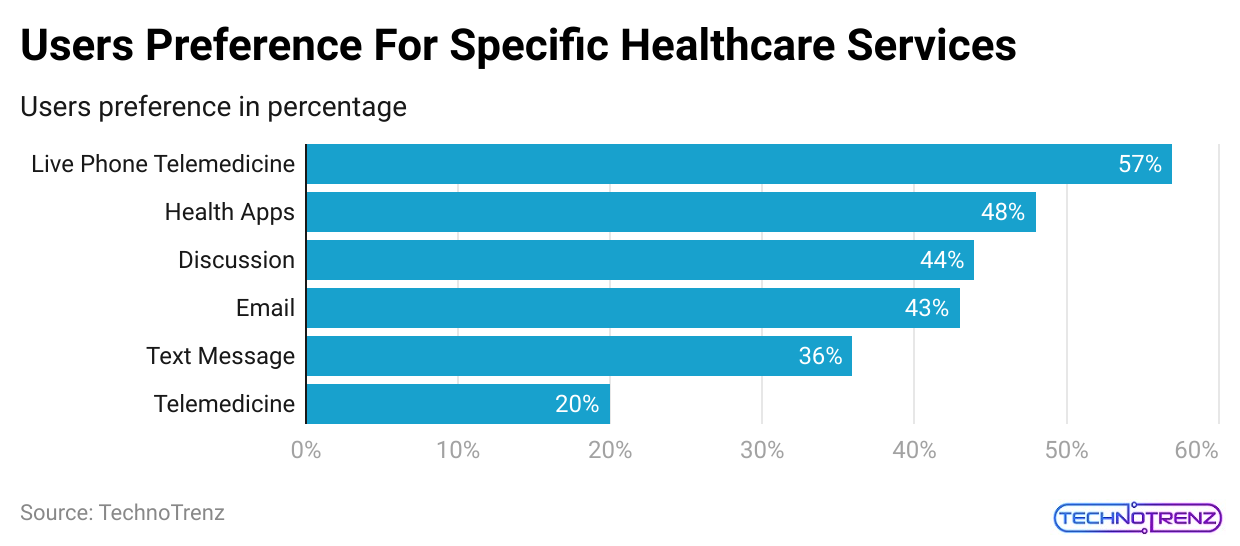
(Reference: market.us)
- Remote Patient Monitoring can reduce the cost of managing Chronic Obstructive Pulmonary Disease (COPD) by up to 35%.
- Remote Patient Monitoring can cut healthcare costs for elderly patients by up to 25%.
- Remote Patient Monitoring can decrease the cost of treating hypertension by up to 30%.
- Remote Patient Monitoring can lower the cost of post-operative care by up to 45%.
- Remote Patient Monitoring can reduce the cost of managing chronic wounds by up to 50%.
- Remote Patient Monitoring can cut the cost of managing mental health conditions by up to 40%.
- According to Remote Patient Monitoring Statistics, remote patient monitoring can lower the cost of managing asthma by up to 35%.
Remote Patient Monitoring Market Growth Statistics
- The COVID-19 pandemic sped up the adoption of Remote Patient Monitoring by 3 to 5 years.
- The Remote Patient Monitoring device market is projected to grow at a rate of 14.9% per year from 2021 to 2028.
- The Remote Patient Monitoring devices market was worth $23.6 billion in 2020.
- In North America, the Remote Patient Monitoring market is expected to grow at a rate of 15.8% per year from 2021 to 2028.
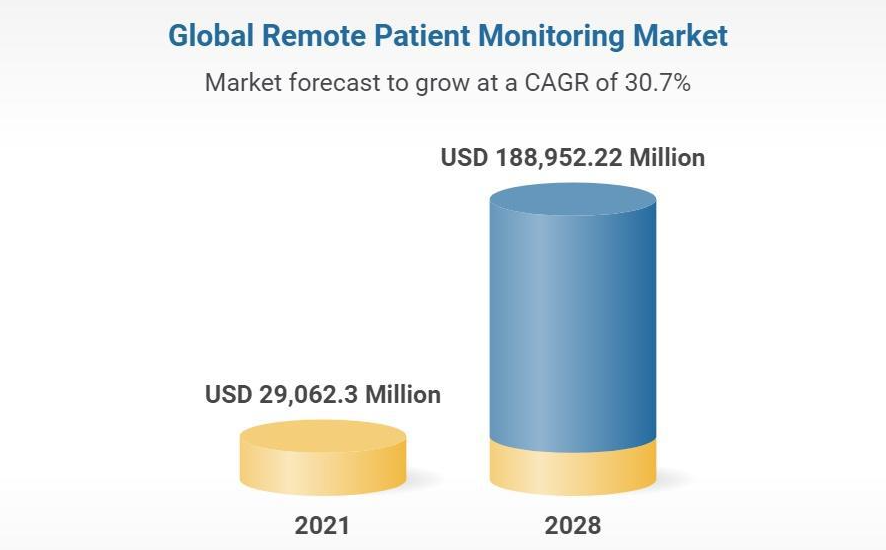
(Source: coachcare.com)
- The global Remote Patient Monitoring software market is expected to reach $1.8 billion by 2026.
- According to Remote Patient Monitoring Statistics, the Asia Pacific Remote Patient Monitoring market is expected to grow at a rate of 16.8% per year from 2021 to 2028.
- The global Remote Patient Monitoring wearable devices market is expected to reach $30 billion by 2027.
- The Remote Patient Monitoring market in Europe is projected to grow at a rate of 14.5% per year from 2021 to 2028.
- The global Remote Patient Monitoring sensors market is expected to reach $1.9 billion by 2025.
- In Latin America, the Remote Patient Monitoring market is expected to grow at a rate of 15.2% per year from 2021 to 2028.
- The global Remote Patient Monitoring data analytics market is projected to reach $8.2 billion by 2025.
- The Remote Patient Monitoring market in the Middle East and Africa is expected to grow at a rate of 13.8% per year from 2021 to 2028.
Outcomes Statistics Of Remote Patient Monitoring Statistics
- The remote patient monitoring market has seen huge growth, going from $1.45 billion in 2021 to an expected $4.07 billion by 2030, with an annual growth rate of nearly 9%.
- Remote Patient Monitoring helps detect early warning signs and symptoms, preventing serious medical issues before they arise. It automatically alerts doctors if a patient’s measurements are abnormal.
- Patients can easily send their health data from home through a virtual care platform, which also provides necessary oversight and support as per Remote Patient Monitoring Statistics.
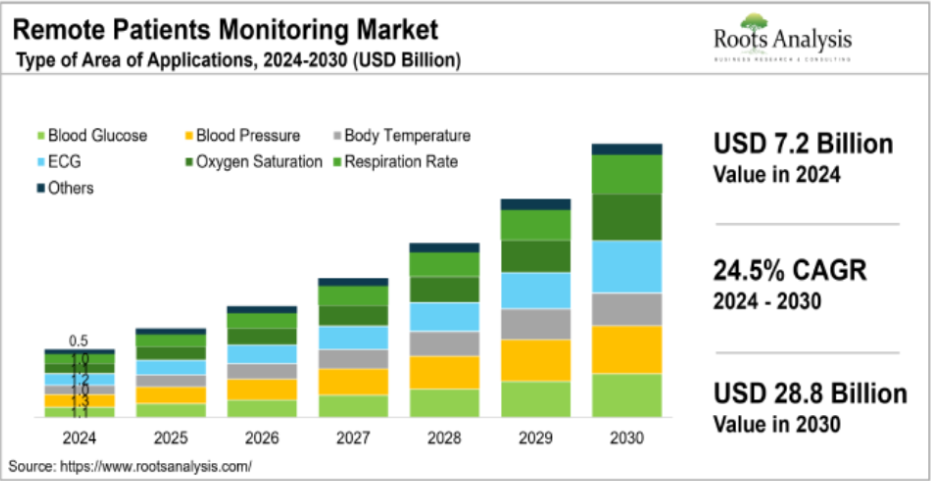
(Source: rootsanalysis.com)
- Remote Patient Monitoring has achieved nearly 100% patient satisfaction, with 90% to 94% of patients having a positive view of it.
- It improves adherence to care plans and lifestyle advice, with 80% of patients actively engaged and over 70% following their doctor’s instructions.
- Remote Patient Monitoring reduces hospital and emergency room visits. Chronic patients using Remote Patient Monitoring experience a 38% drop in hospital admissions and a 17% reduction in treatment costs.
- Remote Patient Monitoring Statistics stated that the likelihood of being readmitted to the hospital within a month of discharge has fallen by 76% for Remote Patient Monitoring users, with only 9.4% being readmitted.
- Emergency doctor visits have decreased by 51%, and there are 47% fewer total medical appointments and in-person visits. Older patients using Remote Patient Monitoring also see a 40% reduction in hospital admissions.
- For Remote Patient Monitoring during COVID-19, 95.5% of patients fully recovered, while only 0.2% did not complete the recommended Remote Patient Monitoring care period.
Remote Patient Monitoring Regional Statistics
The availability and use of remote patient monitoring (RPM) can vary between countries due to factors like healthcare systems, regulations, and technology adoption.
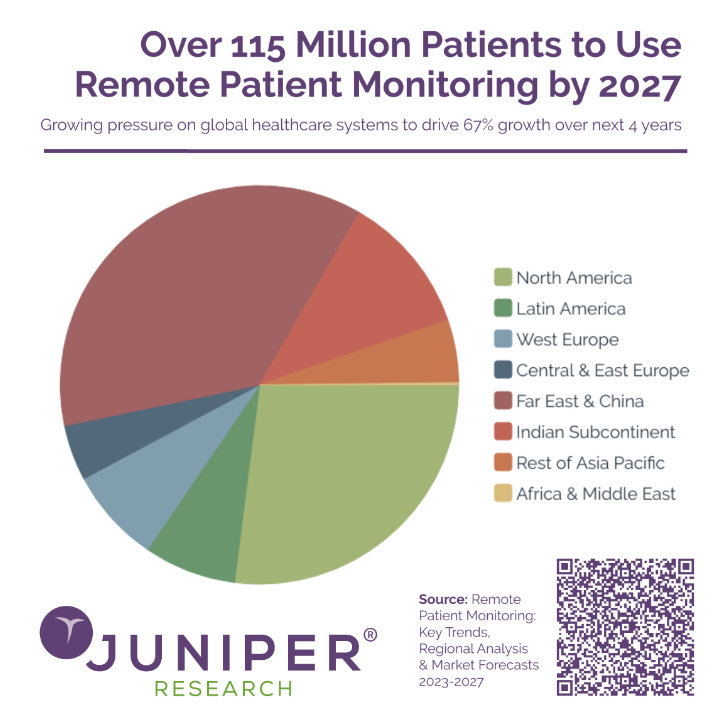
(Source: juniperresearch.com)
Canada
- RPM and telemedicine are growing in Canada, especially for people in remote areas.
- In 2021, 84% of Canadian doctors believed virtual care improved access for patients.
- 75% of doctors said virtual care made their work more efficient, as per Remote Patient Monitoring Statistics.
- Canada had around 17.7 million eHealth users in 2021, expected to grow to 21 million by 2026.
- The Canadian Medical Association reports that 41% of Canadians want video visits with their doctors, but only 4% of family doctors offer this option.
United Kingdom
- Remote Patient Monitoring Statistics stated that the UK is exploring and using RPM to enhance healthcare.
- In 2021, 26% of adults in Great Britain had used remote consultations with their doctors.
- By September 2021, over 80% of GP practices and 95% of pharmacies in England used Electronic Prescription Services.
- The NHS Digital Apps Library had more than 480 health-related apps in 2021.
- As stated in Remote Patient Monitoring Statistics, UK digital health startups raised over $500 million in
- In 2020, there were 1.2 million telehealth appointments in the UK, and 88% of patients used telehealth services that year.
Germany
- Germany is supporting telemedicine and e-health to improve its healthcare system.
- About 23% of healthcare organizations in Germany offer telehealth services, and 20% provide live video consultations.
- Remote Patient Monitoring Statistics stated that the digital health market in Germany is expected to reach $4.30 billion in 2023.
- Revenue from online doctor consultations is expected to be $0.69 billion in 2023, growing at a rate of 6.48% per year.
China
- China is quickly adopting digital health technologies, including RPM, due to its large population and growing middle class.
- By December 2022, over 363 million people in China (about 34% of the population) had used online medical services.
- Ping An Good Doctor is the top online healthcare provider in China, with nearly 23 million active users as of December 2022, according to Remote Patient Monitoring Statistics.
- About 84% of Chinese doctors believe that in the next ten years, patients will easily access remote monitoring tools for their health.
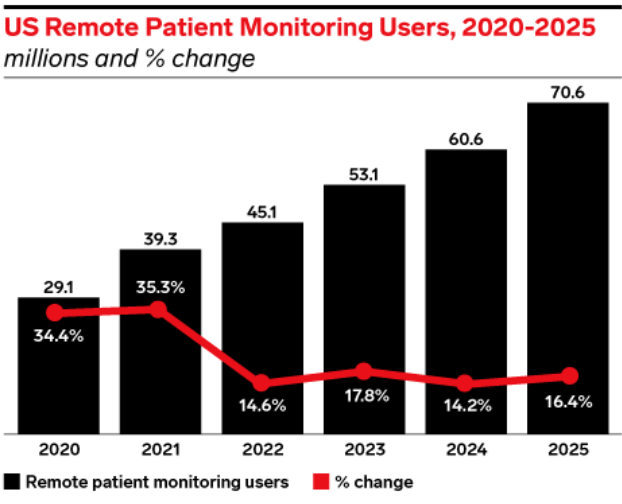
(Source: emarketer.com)
United States
- The U.S. is a leader in RPM, with many programs and initiatives supporting it.
- The country has a strong healthcare system and many RPM companies, as per Remote Patient Monitoring Statistics.
- Telemedicine usage is higher among women (42.0%) compared to men (31.7%).
- People with higher education levels and higher incomes are more likely to use telemedicine.
- 52% of American adults have used telemedicine through live video calls with their healthcare providers.
- The US telemedicine market is expected to reach $22 billion by 2025.
- As per Remote Patient Monitoring Statistics, almost 65% of US doctors had not used Telehealth before COVID-19. However, by the peak of the pandemic, 43% of doctors were seeing over 50% of their patients through remote technology.
Remote Patient Monitoring Recent Development Statistics
Acquisitions and Mergers:
- HealthTech Solutions bought RemoteCare Technologies for $200 million. This deal adds more remote patient monitoring options to its offerings and boosts its telehealth services.
- Telehealth Innovations merged with RemoteHealth Systems to create a partnership that will develop new, integrated remote monitoring platforms. The companies will combine their resources to improve patient care.
New Product Launches:
- CareGuard launched a wearable device for elderly patients that tracks vital signs in real-time and detects falls. They aim to sell 100,000 units in the first year.
- HealthTrack introduced a mobile app for remote monitoring that allows patients to upload health data and chat with healthcare providers. They are targeting 500,000 downloads in six months.
Funding Rounds:
- RemoteCare raised $50 million in Series A funding from Healthcare Investment Group. This money will help them grow their monitoring platform and develop AI tools for analyzing data, to increase patient enrolment by 50% over the next year.
- Telehealth received $30 million in seed funding from Tech Investors. This investment will expand Telehealth’s telemedicine network and create monitoring solutions for chronic conditions, aiming to increase user engagement by 40%.
Consumer Trends:
- The growing interest in home-based healthcare is driving a 20% increase in sales of remote monitoring devices compared to last year.
- The use of remote monitoring jumped during the COVID-19 pandemic, with a 30% increase in telehealth visits and remote consultations, showing a growing acceptance of virtual care.
Regulatory Landscape:
- Regulatory agencies have set new guidelines for RPM reimbursement and data privacy, ensuring that remote healthcare services meet quality standards and protect patient information.
Investment in Research and Development:
- About $3 billion has been invested worldwide in remote patient monitoring research and development. This funding aims to advance technology and expand the RPM market.
Reduction In Hospital Admission Statistics
- Remote Patient Monitoring can lower the rate of hospital readmissions by up to 66%.
- As per Remote Patient Monitoring Statistics, RPM can cut patient death rates by 45%.
- Remote Patient Monitoring can decrease emergency room visits by 38%.
- Remote Patient Monitoring can reduce the number of hospital admissions by 50%.
- Using Remote Patient Monitoring devices can lead to a 56% drop in hospitalizations for heart-related issues.
- Remote Patient Monitoring can cut the need for in-person visits by 82%.
- Remote Patient Monitoring can reduce hospital admissions for patients with chronic conditions by 62%.
- Remote Patient Monitoring can lower hospital readmission rates by 50% for patients with heart failure.
- Emergency Room Visits (Alternate Measure): Remote Patient Monitoring can reduce emergency room visits by 30%.
- Patients using Remote Patient Monitoring devices have a 45% lower risk of dying.
- Remote Patient Monitoring can cut medication errors by up to 80%.
- Remote Patient Monitoring can lead to a 55% decrease in hospital admissions for diabetes patients.
- Remote Patient Monitoring can reduce hospitalizations for patients with Chronic Obstructive Pulmonary Disease (COPD) by 40%.
Remote Patient Monitoring Devices Market Segmentation
By Type
- In 2023, remote patient monitoring services led the industry in terms of value. This was due to high demand during the pandemic and technological advancements.
- Device use is predicted to increase quickly because companies are investing in technologies to state chronic situations. The growing use of these devices in developing countries also contributes to this growth.
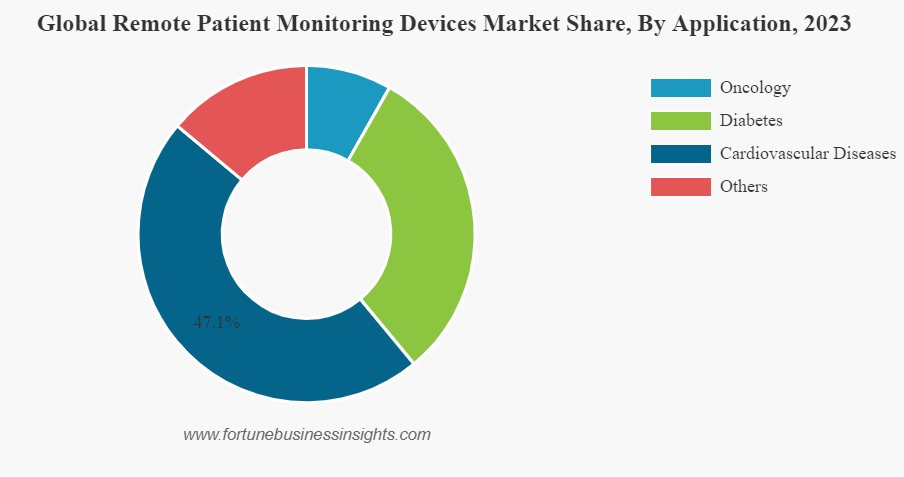
(Source: fortunebusinessinsights.com)
By Application
- The cardiovascular disease section was the largest in 2023, mainly due to the high number of chronic disease cases and increased patient visits. For example, the CDC reports that over 18.2 million grown-ups in the US have coronary artery issues.
- Diabetes is predicted to increase faster because more people are using blood glucose monitors, as per Remote Patient Monitoring Statistics.
- New features in these devices, like better smartphone compatibility, have increased their use worldwide.
- For instance, SmartMeter launched the iGlucose monitor in August 2021 to track gestational diabetes.
- With almost 700,000 pregnant women affected by gestational diabetes each year, demand for these devices is expected to boost this segment’s growth from 2021 to 2029.
By Final-user
- Providers had the largest market share in 2023. The increase in hospital visits and the need for social distancing during the pandemic led to more healthcare facilities using monitoring devices.
- Patients are expected to grow the fastest as more people become aware of the benefits of real-time health monitoring. Afforded health plans from payers are helping patients access these devices, which will also drive growth in this segment.
- Payers are contributing by offering affordable health plans that support patients in using new technologies, which will likely boost growth in the payer’s segment, as per Remote Patient Monitoring Statistics.
Artificial Intelligence In Remote Patient Monitoring Statistics
- About 88% of healthcare providers have started using remote patient monitoring technology in their practices.
- According to Remote Patient Monitoring Statistics, the use of wearable devices for remote monitoring is expected to increase by 35% each year.
- Telehealth visits are expected to surpass 200 million by 2024, indicating a significant shift towards remote healthcare services.
- Using artificial intelligence (AI) in remote patient monitoring could potentially save the healthcare industry up to $300 billion by 2024, highlighting AI’s cost-saving potential.
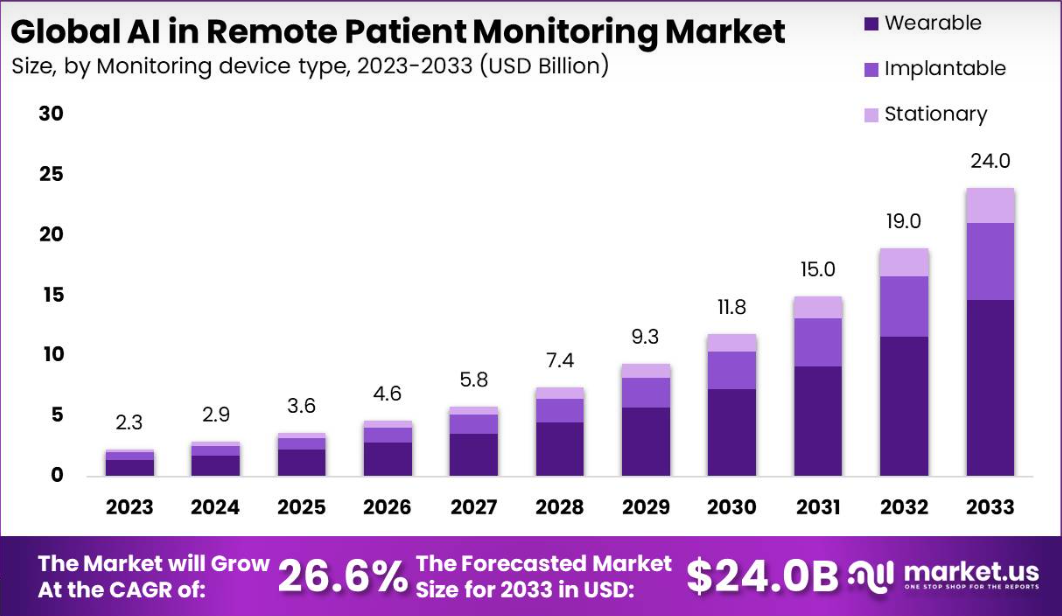
(Source: market.us)
- Remote monitoring might boost medication adherence by 60%, helping patients stick to their treatment plans better, according to Remote Patient Monitoring Statistics.
- The global market for wearable medical devices is projected to hit $27.8 billion by 2024, reflecting the growing adoption of wearable health technology.
- Remote monitoring could cut emergency room visits by 40%, showing its effectiveness in preventing unnecessary hospital trips.
- AI-supported monitoring helps detect health issues early. About 23% of US healthcare executives see AI as improving clinical outcomes.
- Remote Patient Monitoring Statistics stated that AI-powered systems can improve efficiency by up to 45%, making healthcare processes more effective.
- AI algorithms have over 90% accuracy in spotting abnormalities in vital signs, proving their reliability.
- AI-driven monitoring has led to a 25% decrease in hospital readmissions, showing its success in managing care after discharge.
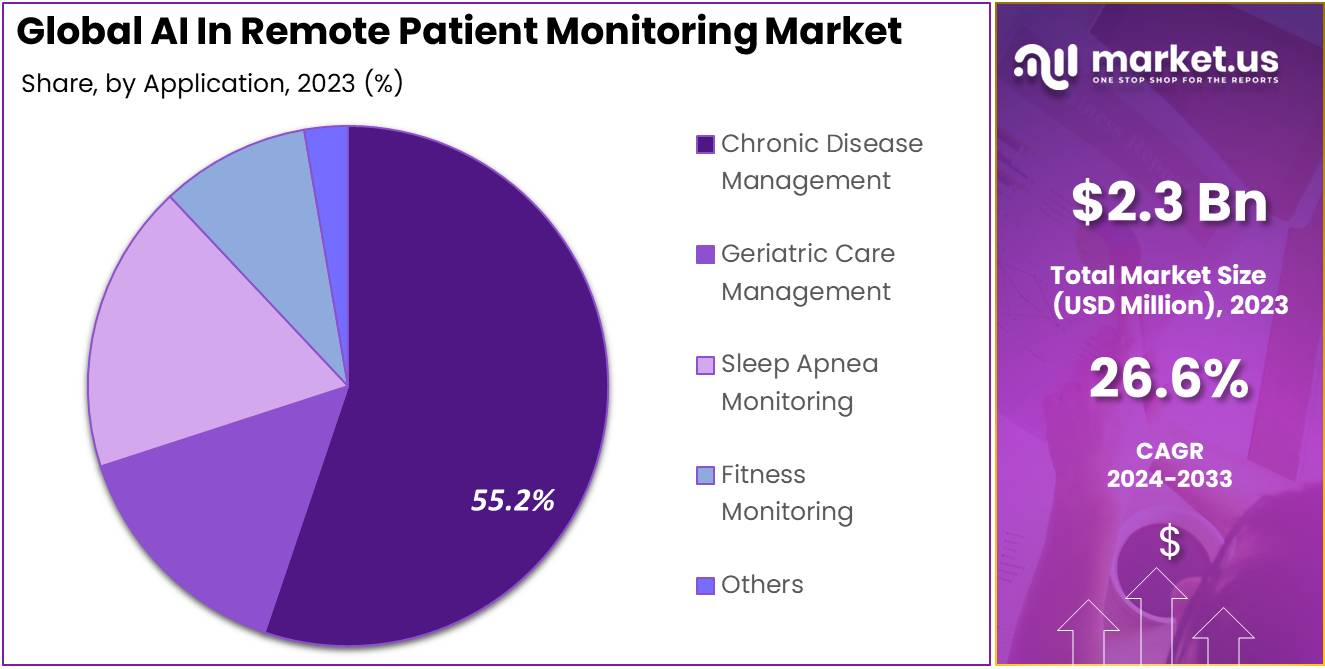
(Source: market.us)
- Patients using AI-based systems are 50% more likely to be actively involved in their healthcare, promoting better treatment outcomes.
- AI technologies have reduced diagnosis times by an average of 40%, speeding up treatment and improving patient results.
- Remote Patient Monitoring Statistics stated that the tailored treatment plans based on patient data have increased personalized care delivery by 20%, boosting patient satisfaction.
- AI-enabled monitoring solutions can handle a 50% increase in patient volume without sacrificing care quality, improving access to healthcare.
Technology Performance:
- Support Vector Machine (SVM): Achieves 90% accuracy in assessing healthcare signal quality.
- CatBoost Model: Detects Atrial Fibrillation with 99% accuracy.
- Multilayer Perceptron (MLP) Neural Networks: Performs well with 96.48% accuracy, 98.70% sensitivity, and 94.45% specificity.
- K-Nearest Neighbors (KNN) Algorithm: Effective in fall detection with 90.28% accuracy, 82.17% sensitivity, and 85.74% precision.
- Long Short-Term Memory (LSTM) Technology: Excellent in fall detection with 96.78% accuracy, 97.87% sensitivity, and 95.21% specificity.
Devices Used For Remote Patient Monitoring Devices
#1. Pulse Oximeter:
- This easy-to-use device checks the oxygen level in your blood, heart rate, and pulse without needing to break the skin.
- It clips onto a fingertip or earlobe and uses red and infrared light to measure blood oxygen.
- It can also detect problems with blood flow to the brain as per Remote Patient Monitoring Statistics.
- It’s helpful for patients with conditions like COPD or heart disease, and it sends oxygen saturation (SpO2) data to the doctor.
#2. Blood Pressure Monitor:
- This device tracks your blood pressure at home.
- You place a cuff around your arm, and the monitor inflates it to measure your systolic and diastolic pressure. The results are sent directly to your doctor for review.
#3. Continuous Glucose Monitor:
- This device monitors blood sugar levels throughout the day. It uses a small sensor under the skin to take readings every few minutes.
- This is crucial for people with type 1 or type 2 diabetes, as it helps manage glucose levels, prevent complications, and adjust medication.
#4. Insulin Pump:
- This device delivers insulin for people with diabetes. It more closely mimics the pancreas’s natural insulin release than daily injections.
- It adjusts insulin delivery based on blood glucose levels, meals, and activity and tracks the amount and timing of insulin delivered.
#5. Anticoagulation Testing Device:
- Also called a home INR machine, it measures how quickly your blood clots.
- You put a small blood sample on a test strip, which the device reads to provide an International Normalized Ratio (INR).
- This information is sent to your healthcare provider in real-time.
#6. Electrocardiography (ECG) Devices:
- These monitor the heart’s electrical activity over time.
- By attaching electrodes to your skin, the device tracks your heart’s rhythm and rate to spot any abnormalities.
- The data is sent to your healthcare provider for analysis. ECG devices come in different forms, like handheld units, wearables, and patches.
#7. Heart Rate Monitors:
- These devices measure your heart rate per minute in real time. Worn on the wrist or chest, they track the number of heartbeats, help diagnose cardiovascular issues, and monitor exercise.
- They are useful for detecting conditions like arrhythmias.
#8. Smart Inhalers:
- These are designed for people with asthma or COPD.
- They combine a traditional inhaler with digital technology to track medication use, send reminders, provide feedback on how to use the inhaler correctly, and send data to healthcare providers.
#9. Medical Alert Systems:
- These devices offer emergency help for patients with severe chronic conditions or elderly individuals at risk of falls.
- If an emergency happens, patients can press a button to alert their doctor.
#9. Maternity Care Monitoring:
- These devices help pregnant women track health indicators like heart rate, blood pressure, and fetal heart rate.
- Some advanced monitors even track contractions, helping determine when to go to the hospital for labor.
#10. Pediatric At-Home Monitoring Devices:
- These track children’s vital signs, such as heart rate, temperature, and oxygen levels.
- They are especially helpful for parents of children with chronic conditions, allowing healthcare professionals to monitor their health and treatment.
#11. Remote Stethoscope:
- This device lets doctors listen to a patient’s heart and lung sounds from a distance.
- It converts sound waves into electronic signals and sends them to the doctor, making remote diagnosis easier and reducing the need for extra hospital visits.
#13. Smart Scales:
- These measure weight and track body fat, muscle mass, bone density, and water percentage.
- They help with weight management and monitoring symptoms related to chronic conditions.
#14. Smart Beds:
- These high-tech mattresses improve sleep quality with features like sleep tracking, adjustable settings, and temperature control.
- They help monitor and improve sleep patterns.
#15. Smart Thermometer:
- This device measures body temperature and syncs with an app.
- It shares temperature readings with healthcare providers to help detect illnesses or infections.
- It’s used by people of all ages, especially during flu season or pandemics.
#16. Medication Monitoring Devices:
- These devices track medication intake, reminding patients to take their meds on time and in the correct doses.
- They help prevent medication errors and are particularly useful for those with complex medication schedules.
#17. Patient Wearables:
- Fitness trackers and smartwatches collect data on heart rate, physical activity, and sleep.
- This information helps identify health issues and monitor progress, allowing for early intervention and personalized care.
#18. Connected Contact Lenses:
- These lenses monitor intraocular pressure, which is important for glaucoma patients.
- They send this data wirelessly to the healthcare provider, who can adjust treatment as needed.
#19. Sleep Monitors:
- These devices track sleep patterns using sensors, measuring sleep duration, quality, and occurrences of sleep apnea.
- This data helps diagnose sleep disorders and create effective treatment plans.
#20. Neurological Monitoring Devices:
- These devices monitor brain activity and track seizures or changes in cognitive function.
- They are essential for managing conditions like epilepsy and Alzheimer’s, helping adjust medication, and assessing treatment effectiveness.
#21. Remote Spirometry Devices:
- These devices measure lung function for patients with respiratory conditions like asthma or COPD.
- They monitor lung volume and flow rate, helping track disease progress and treatment effectiveness.
Conclusion
The future of healthcare is becoming more connected. Remote Patient Monitoring (RPM) is growing quickly and offers many new opportunities. It’s not just a specialized tool anymore. By using wearable devices, integrating TelehealthTelehealth, and analyzing data more effectively, RPM supports a patient-focused approach to care. Patients can now manage their health from home, while doctors can use this data for quicker and more accurate treatments.
RPM is also making remote rehabilitation possible, focusing on mental health and improving data security with blockchain technology. As technology advances, we can expect even more exciting developments in remote care. This connected healthcare system is set to provide better access and personalized care as the new standard. We have shed ample light on the Remote Patient Monitoring Statistics through this article.
Sources
FAQ.
There are increasingly available devices that monitor your health throughout the day, and even more are on the way. Right now, about 50 million people in the United States use these “remote patient monitoring” gadgets. Home blood pressure monitors were among the first of these devices.
HRS stands out as a top remote patient monitoring company for a few reasons. First, PatientConnect addresses a variety of chronic conditions, such as heart problems, respiratory diseases, COPD, and high blood pressure. Second, it can work with different biometric devices, making it adaptable for collecting various types of health data.
Remote patient monitoring (RPM) carries cyber liability risks. Since these devices send patient data, there’s a chance of data breaches if the information isn’t properly encrypted. According to HIPAA regulations, all personal health information (PHI) must be encrypted during transmission.

Saisuman is a professional content writer specializing in health, law, and space-related articles. Her experience includes designing featured articles for websites and newsletters, as well as conducting detailed research for medical professionals and researchers. Passionate about languages since childhood, Saisuman can read, write, and speak in five different languages. Her love for languages and reading inspired her to pursue a career in writing. Saisuman holds a Master's in Business Administration with a focus on Human Resources and has worked in a Human Resources firm for a year. She was previously associated with a French international company. In addition to writing, Saisuman enjoys traveling and singing classical songs in her leisure time.



